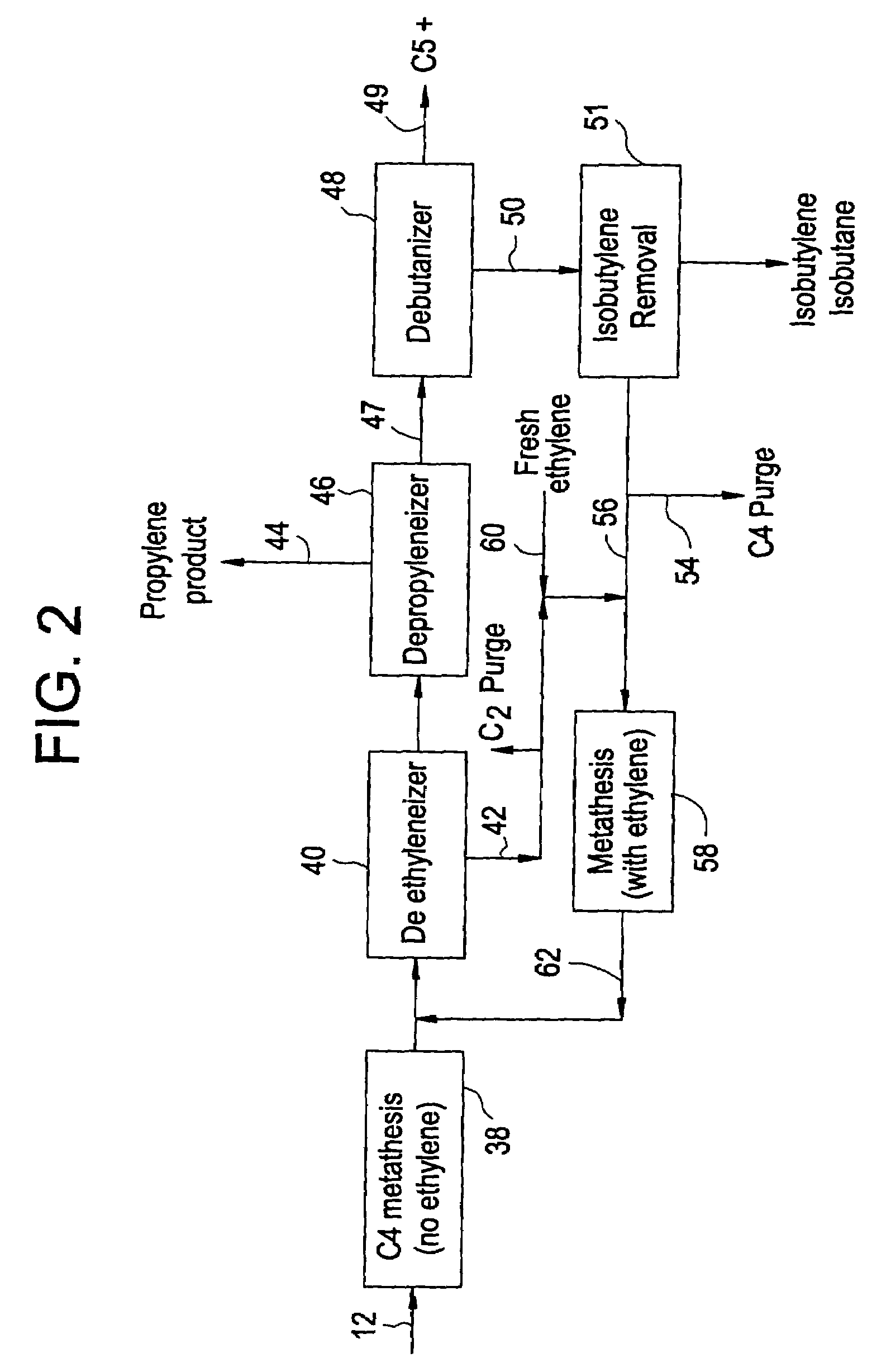Processing C4 olefin streams for the maximum production of propylene
a technology of olefin and olefin slurry, which is applied in the direction of hydrocarbon by metathesis reaction, hydrocarbon preparation catalyst, organic chemistry, etc., can solve the problem of limiting the extent of hydroisomerization, reducing the efficiency of isobutylene reaction, and loss of butene feedstock for subsequent operations downstream, so as to reduce the beneficial effect of autometathesis isobutylene reaction on propylene selectivity and eliminate any isobutylene removal capacity advantag
- Summary
- Abstract
- Description
- Claims
- Application Information
AI Technical Summary
Benefits of technology
Problems solved by technology
Method used
Image
Examples
Embodiment Construction
[0022]Before describing the present invention in detail, a typical prior art system for the production of propylene from a C4 hydrocarbon stream from a cracking process will be described with reference to FIG. 1. In this way, it can be better seen how the present invention differs and increases the production of propylene.
[0023]As shown in FIG. 1, the C4 cut feed stream 12 is fed to the isobutylene removal step 14. This C4 stream has had butadiene removed to a level consistent with the catalyst system employed. If a double bond isomerization catalyst is utilized, then the butadiene is 4 cut is typically as previously described and the current options for the removal of the isobutylene are as follows:[0024]1. Selectively react isobutylene with methanol to form methyl tertiary butyl ether (MTBE).[0025]2. Selectively react isobutylene with itself to form isooctenes.[0026]3. Fractionation in a de-isobutyleneizer to remove both isobutylene and isobutane.[0027]4. Treatment in a combined h...
PUM
| Property | Measurement | Unit |
|---|---|---|
| molar ratios | aaaaa | aaaaa |
| molar ratio | aaaaa | aaaaa |
| molar ratio | aaaaa | aaaaa |
Abstract
Description
Claims
Application Information
 Login to View More
Login to View More - R&D
- Intellectual Property
- Life Sciences
- Materials
- Tech Scout
- Unparalleled Data Quality
- Higher Quality Content
- 60% Fewer Hallucinations
Browse by: Latest US Patents, China's latest patents, Technical Efficacy Thesaurus, Application Domain, Technology Topic, Popular Technical Reports.
© 2025 PatSnap. All rights reserved.Legal|Privacy policy|Modern Slavery Act Transparency Statement|Sitemap|About US| Contact US: help@patsnap.com



